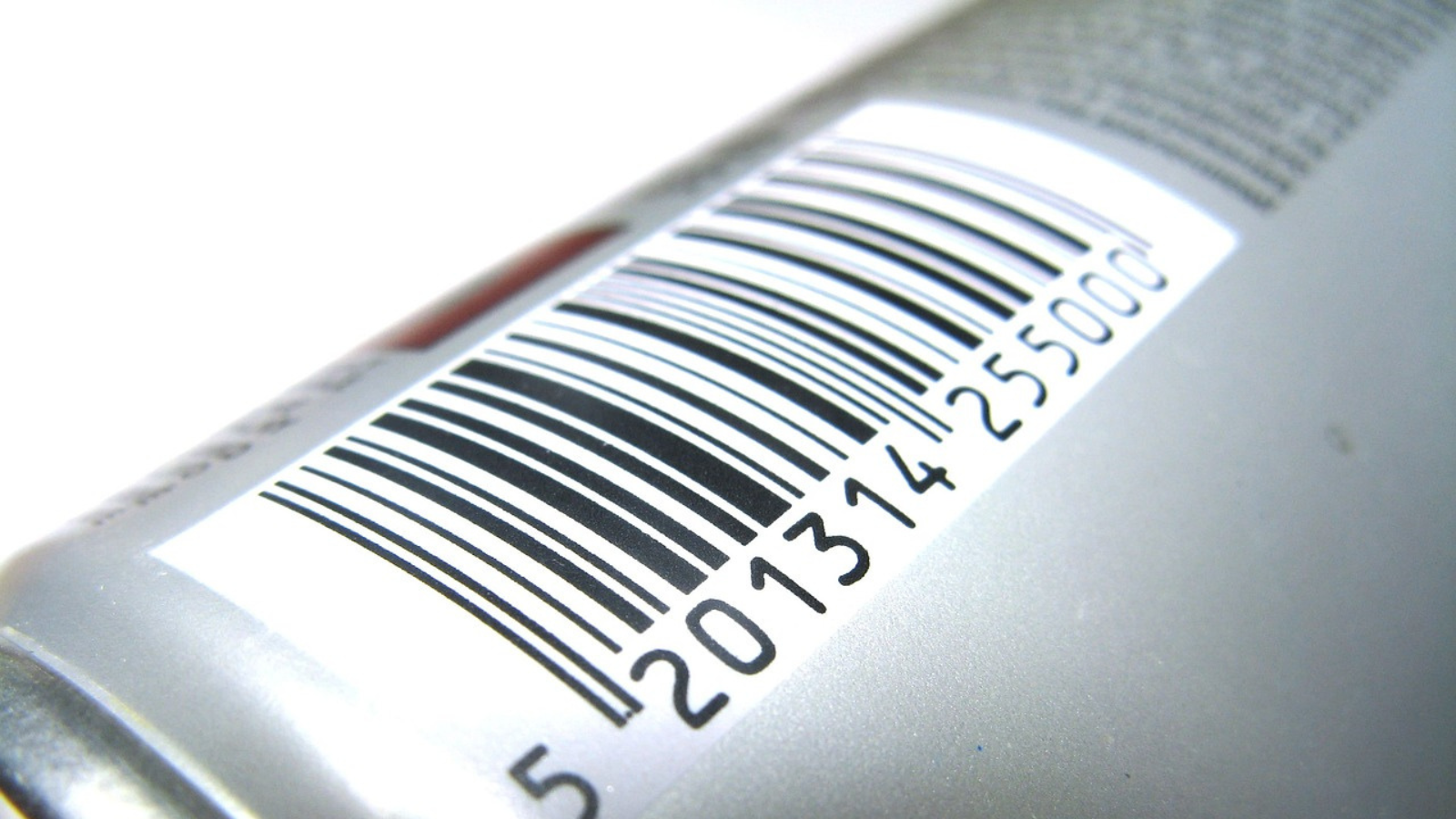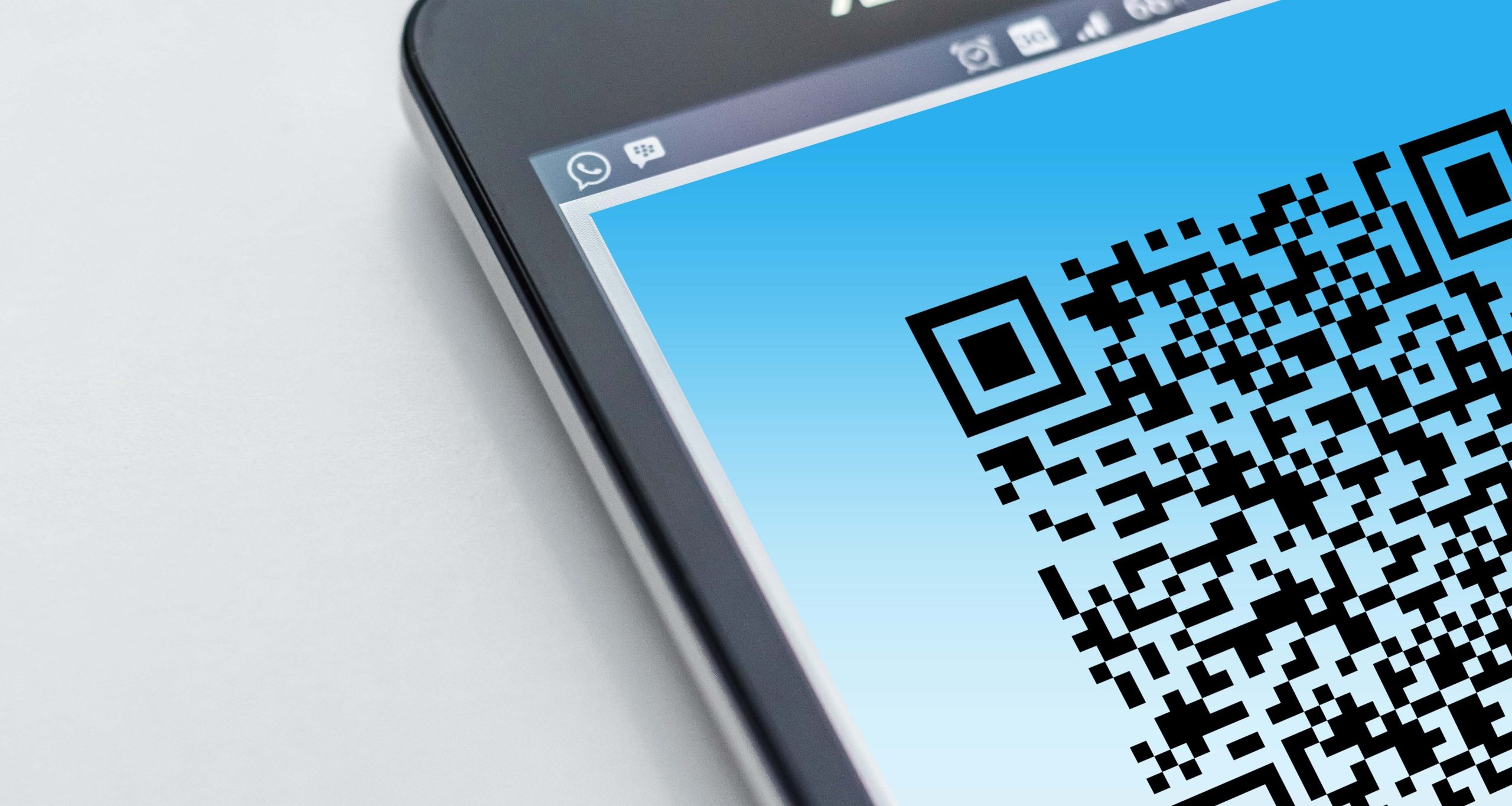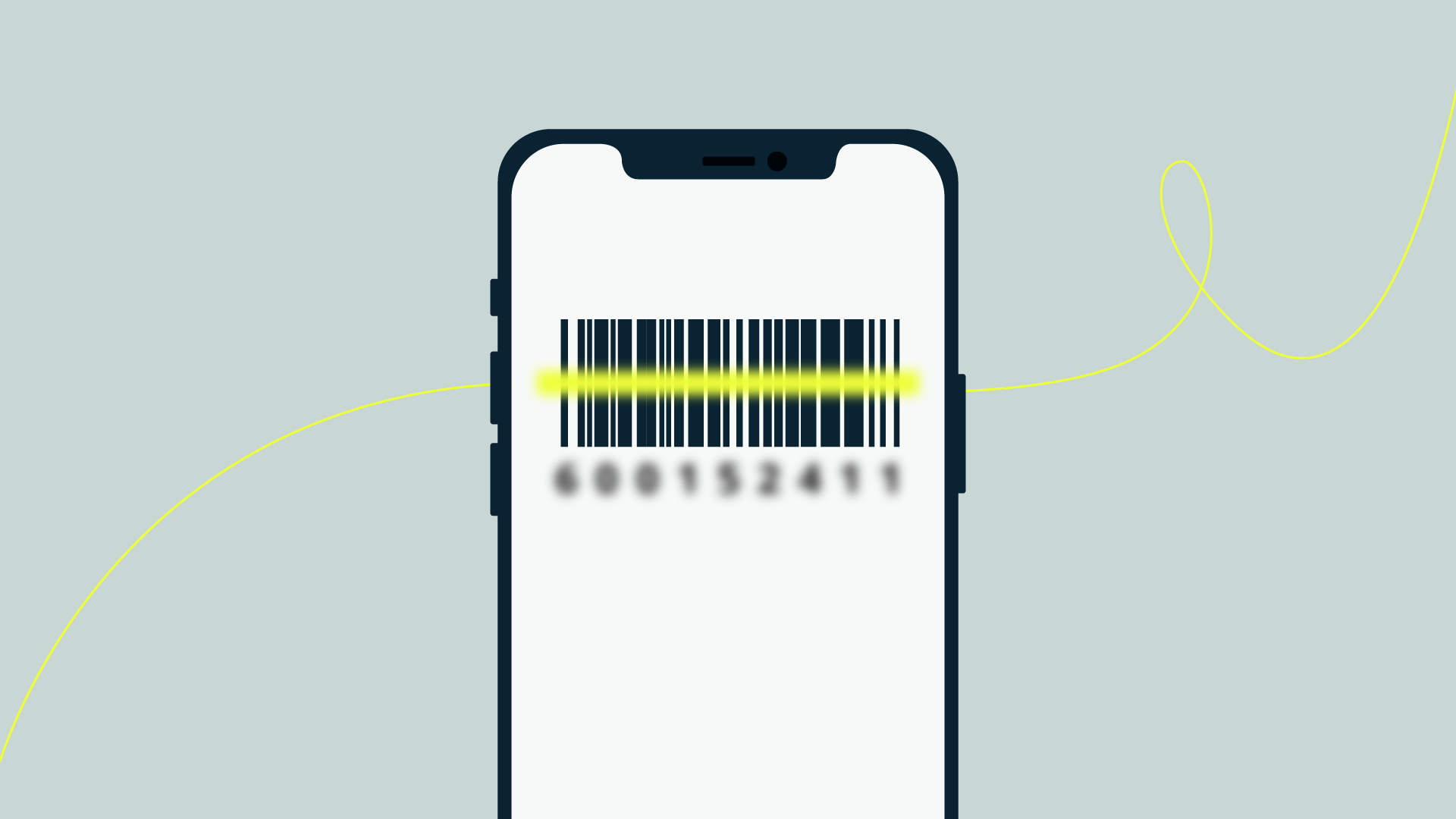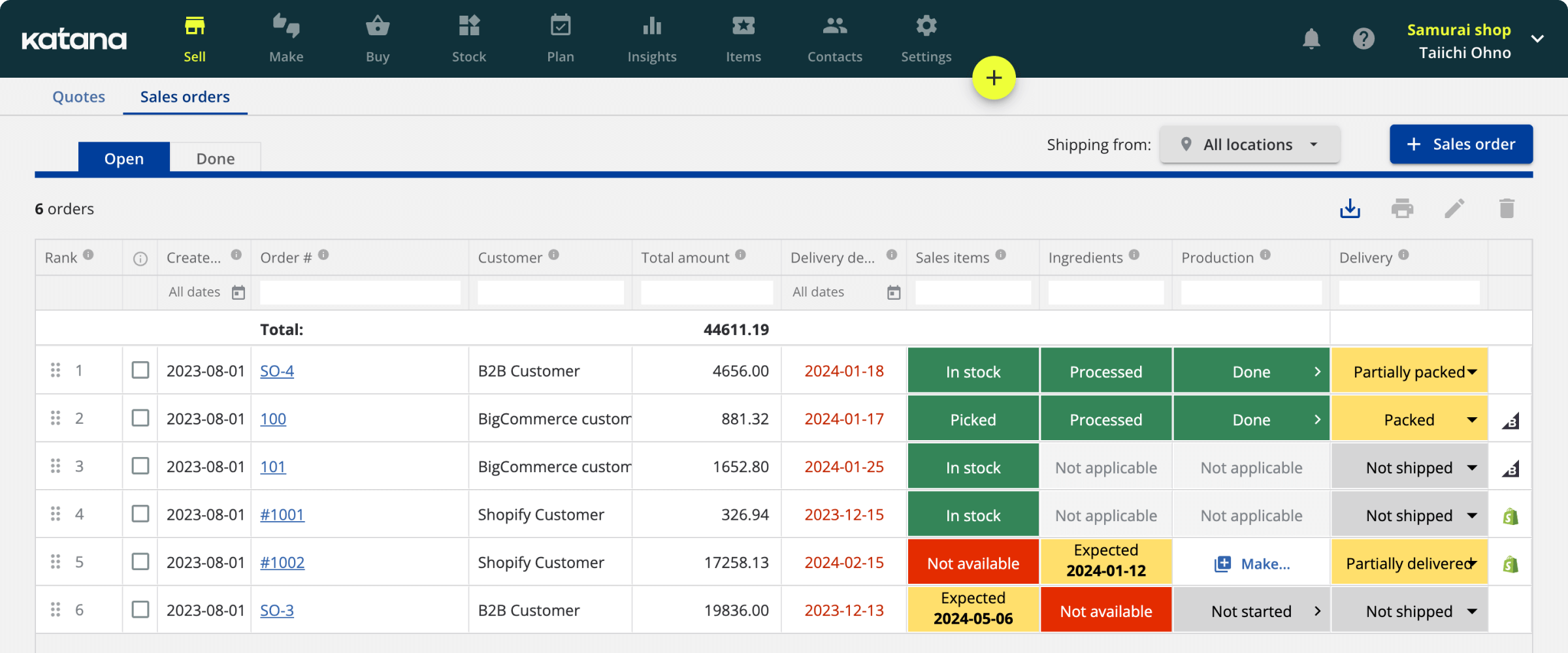Different types of barcodes: your ultimate guide
From groceries to inventory management — barcodes have become an integral part of our daily lives. However, not all barcode types are created equal, each with its unique structure and purpose. Join us as we take a closer look at this sophisticated technology.

Henry Kivimaa

Barcodes are sophisticated forms of identification that often go unnoticed in our daily lives. Similar to secret codes, they reveal hidden product and service information. Their ability to discreetly convey vital data makes them look like something out of a spy movie.
Just as spies use complex codes to send messages, there are different types of barcodes, each with unique features and uses.
From the traditional one-dimensional barcode formats we see on everyday consumer goods to the more complex two-dimensional barcode types that can store much more information — an entire world of barcode formats is waiting to be explored. In today’s blog, we will take a look at the various types of barcodes, how they differ, and what makes them so valuable in the modern world. So, grab your notepad and magnifying glass, and let’s start unraveling the secrets of the barcode world.
What are the different barcode standards?
There are several barcode types, each with its own specifications, symbols, and applications. Here are some of the most common barcode formats:
UPC (Universal Product Code)
The UPC is the most common barcode symbology and has been used to identify consumer products in the retail industry since the 1970s.
The UPC consists of a series of black and white bars of varying widths and a 12-digit numerical code unique to each product. The first six digits of the code identify the manufacturer, while the next five digits identify the product itself. The final digit is a check digit used to ensure the accuracy of the code.
UPC barcodes are used for various purposes, including inventory management, price checking, and sales transactions.
They are also commonly used in online shopping, where consumers can scan the barcode of a product with their smartphone. This allows buyers to easily access information about the product, read reviews, and compare prices. Despite the widespread use of UPC barcodes, some products still do not have them, such as fresh produce and certain types of handcrafted goods.
Fun fact: The first product to be scanned with a UPC barcode was a pack of Wrigley’s Juicy Fruit chewing gum in 1974 at a supermarket in Ohio. The pack of gum is now on display at the Smithsonian National Museum of American History as a symbol of the technological advancements in retail that the barcode represented.
EAN (European Article Numbering)
The EAN is a barcode system widely used in Europe to identify products.
It provides a unique code for each product, which can be used to track inventory, manage supply chains, and optimize sales. The EAN consists of 13 digits encoded into a barcode. The first three digits indicate the country, the following four represent the manufacturer, and the remaining six represent the product. The EAN has become the standard in Europe and is used by retailers, manufacturers, and distributors.
Haribo Goldbears
An example of an EAN code is 4001686304162, the code for a 500-gram package of Haribo gummy bears.
The first three digits of the code “400” indicate that the product was manufactured in Germany.
The next four digits, “16863”, represent the manufacturer code assigned to Haribo.
The next part, “0126”, represents the specific product code for Goldbears Gummi Candy.
The last number, “5,” is a check digit to ensure the barcode was scanned or entered correctly.
The EAN barcode allows retailers to scan the product at the point of sale, which provides information about the product, such as its price, stock level, and location within the store.

Code 39
Code 39 is a linear barcode symbology that can represent alphanumeric characters using a combination of bars and spaces of varying widths.
It is also known as the “3 of 9 Code” because it initially encodes 39 characters, including all uppercase letters, numbers, and special symbols. In later development, the limit was changed to 43 characters. Code 39 is widely used in various industries, such as healthcare, logistics, and retail. It helps streamline inventory management, product tracking, and data entry operations.
In a Code 39 barcode, each character is encoded using a pattern of nine bars, where six bars are narrow and three bars are wide.
In addition to the bars and spaces representing the characters, Code 39 barcodes contain a start character, a stop character, and a checksum digit. The start character is always an asterisk (*), and the stop character is a bar with a stop pattern, usually represented as a hyphen (-) or a period (.). The checksum digit is calculated based on the values of the characters in the barcode and is used to detect errors in the barcode reading process.
Fun fact: Code 39 was initially designed to be read by cameras.
When the symbology was developed in 1974, it was envisioned as a way to encode information that could be read by cameras, which were becoming more widely available at the time. The original design of Code 39 was created to be easily read by cameras with sufficient resolution. However, as laser scanners became more popular in the 1980s, Code 39 was also adapted to be compatible with these devices.
The bars and spaces were standardized into narrow and wide elements that laser scanners could accurately read, making Code 39 even more versatile and widely used in various industries.
Code 128
Code 128 is a 2D (two-dimension) linear barcode that can hold a large amount of information in a small space.
It is commonly used in logistics, transportation, and healthcare industries for product identification, shipment tracking, and inventory management. Code 128 can encode all 128 ASCII characters. This includes letters, numbers, and symbols, making it a versatile barcode standard.
Code 128 is a continuous barcode that includes a start, data, checksum digit, and stop code. The start code indicating the beginning of the barcode is represented by the symbol “START,” while the stop code is represented by the symbol “STOP.” The data code includes the encoded data, and the checksum digit is used for error detection.
QR Code (Quick Response Code)
QR Code is a 2D barcode symbology developed in Japan in 1994.
It consists of black and white squares in a grid on a white background. QR codes can encode large amounts of data, including text, URLs, contact information, and even multimedia files such as videos and images. They can be scanned by mobile devices and other barcode scanners, making them a popular tool for marketing, advertising, and data storage.
Example of QR code usage
A restaurant creates a QR code that customers can scan to access their menu. The QR code is displayed on a poster or flyer, and customers can use their smartphone camera to scan it. The QR code contains a link to the restaurant’s website or online menu, allowing customers to view the offers on their phone without having to touch a physical menu.

Data Matrix
Data Matrix is a two-dimensional barcode symbology developed by International Data Matrix, Inc. in the 1990s.
It has since become widely used in various industries, such as manufacturing, healthcare, and logistics. Similarly to QR codes, Data Matrix codes also consist of a black-and-white grid arranged in a square or rectangular pattern. The number of squares in the code determines the amount of data that can be stored, with larger codes able to store more data.
Data Matrix codes are highly resilient and can be read even if parts of the code are damaged or missing.
This makes them a popular choice for use cases where the code may be exposed to harsh environments or rough handling. They can be printed on various surfaces, including metal, plastic, and paper. The codes can be read with scanners or smart devices.
Fun fact: Data Matrix was one of the barcodes considered for use on postage stamps in the United States. The Postal Service tested several barcode symbology types in 2006, including Data Matrix, but ultimately decided to use the more widely recognized and standardized USPS Intelligent Mail barcode.
Despite their unique designs and structures, barcodes all serve the same purpose of encoding data for easy identification and tracking of various products. In essence, the main objective of barcodes remains consistent across different types — to streamline the management and monitoring of assets in various industries.
Scan your way to success with Katana
Book a demo to get all your questions answered regarding Katana’s features, integrations, pricing, and more.
What are the benefits of using barcodes?
Implementing a barcode system in your business for the first time can be challenging and requires investing a lot of time and effort. However, when done right, the benefits can vastly improve your operations. Here are some of the benefits that barcodes can introduce to your business:
Accuracy
Scanning a barcode eliminates the need for manual data entry, which reduces the risk of human errors. It can save time and money and improve data accuracy, which is essential in industries like healthcare and finance.
Efficiency
Scanning barcodes is faster than manual labor, saving time and increasing productivity. This feature can benefit businesses that process high volumes of transactions or shipments, such as logistics companies and e-commerce platforms.
Cost-effective
Barcodes are a simple and affordable way to track inventory and materials, requiring only a barcode scanner and software to read and manage the data. This can be beneficial for small businesses or startups that have limited budgets for IT infrastructure.
Improved inventory control
Barcodes provide real-time information about inventory levels, which can help businesses avoid stockouts or excess inventory. It can be helpful for retailers, manufacturers, and distributors who want to optimize their inventory management practices.
Download a free manufacturing inventory template
Download a manufacturing inventory management Excel spreadsheet to import material and stock levels, define your product recipes, and automatically update sales, purchasing, and manufacturing orders in one powerful spreadsheet.
Better customer service
Businesses can improve customer satisfaction and loyalty by using barcodes to quickly and accurately process orders. This feature is particularly relevant for e-commerce platforms, which rely heavily on efficient order processing and delivery.
Enhanced supply chain management
Barcode systems can help businesses track goods as they move through the supply chain, from production to shipping to sales. This feature benefits manufacturers, distributors, and retailers who want to improve their supply chain visibility and efficiency.
Data collection and analysis
Barcodes provide data that can be analyzed to identify trends, optimize operations, and make more informed decisions. This can be valuable for businesses that want to be more data-driven in their decision-making process and gain a competitive advantage.
What are the challenges of using barcodes?

While the benefits of barcodes outweigh the challenges for most businesses, it is essential to consider all potential obstacles when implementing a barcode system. The challenges include:
Limitations on data capacity
Traditional barcodes have relatively small storage space. This makes it difficult to encode complex information like images or lengthy descriptions.
Physical damage
Barcodes can become unreadable if damaged or exposed to extreme environmental conditions, such as fluctuating temperatures or moisture. This can ultimately lead to errors in data collection and processing.
Distance limitations
Barcode scanners have a limited range, meaning the code must be within a certain distance from the scanner to be read. This can be particularly problematic for large or bulky items, which may be difficult to position correctly for scanning.
Compatibility issues
When businesses use different barcode types, compatibility problems may arise since not all scanners can read each type. This can cause problems with inventory management and data collection, leading to inefficiencies and errors.
Cost of implementation
While barcodes are a cost-effective solution for inventory management, there are still costs associated with implementing the necessary hardware and software. This can be particularly challenging for small businesses or startups with smaller budgets.
Human error
While barcodes can reduce errors caused by manual data entry, they are still subject to errors caused by human input, such as incorrect labeling or scanning of the wrong barcode. Therefore, it is essential to have quality control measures in place to prevent mistakes.
Security concerns
Barcodes can be easily replicated or counterfeited, leading to security concerns in product authentication or access control. Implementing security measures and regularly auditing barcode systems can save businesses from potential fraud or tampering.
Barcodes and Katana

Katana is an all-in-one cloud manufacturing platform that helps businesses optimize their operations. With the support of barcode systems, Katana can help improve manufacturing efficiency and eliminate waste.
Some of the features that Katana offers include:
Inventory tracking
Katana’s inventory tracking feature gives you control of inventory levels, reorder points, and lead times. Using barcode scanning, you can quickly and accurately update inventory levels in real time, reducing the risk of over- or understocking.
Production scheduling
Katana allows you to schedule production based on inventory levels and plan customer demand. Barcode scanning is useful for quickly identifying and allocating the required raw materials for each production run, ensuring that the correct items are used in manufacturing.
Quality control
Katana gives you full traceability throughout the production run, simplifying and optimizing quality control processes. Barcode scanning can be used to ensure that each item is labeled correctly with the appropriate batch and lot ID, making it easy to track and trace items in case of a recall or quality issue.
Reporting and analytics
Katana’s manufacturing analytics feature allows you to generate custom reports and track performance related to your inventory and production processes. Barcode scanning data can generate insights into inventory turnover rates, manufacturing cycle times, and other essential metrics, helping you optimize your operations and make more data-driven decisions.
Integrations
Katana has partnered with various platforms, offering support in many business areas. Check out all integrations from accounting to e-commerce, or build your custom workflow with Katana’s open API.
Remember, with the right barcode scanner, you too can be a barcode spy, keeping inventory secrets and sales data safe. So the next time you see a barcode, remember it’s not just a barcode, but a business secret agent.
Try Katana and raise the bar-code
Book a demo to get all your questions answered regarding Katana’s features, integrations, pricing, and more.

Henry Kivimaa
Table of contents
Get inventory trends, news, and tips every month
Get visibility over your sales and stock
Wave goodbye to uncertainty by using Katana Cloud Inventory for total inventory control
